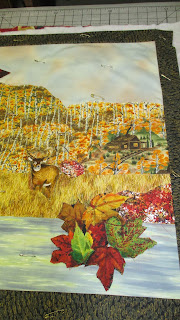 |
| Sjt Ernest Greenwood, about 1939 |
My first cousin 2x removed, my great-grandfather's sister's boy, was a Japanese prisoner of war at the Sandakan prison camp in Borneo. In 1945, knowing the Allies would soon land on Borneo, the Japanese moved the starving prisoners inland to the small village of Ranau. The Death March from Sandakan to Ranau is one of the most notorious and horrific war crimes. All 900 British soldiers died. The only survivors were eight Australian men who escaped into the jungle to be helped by the local natives. Sjt. Ernest Greenwood of the Royal Artillery, at age 29, died on June 11, 1945 having gone though a hell I can't bear to imagine.
Ernest was the only child of Alice Jane Greenwood born June 11, 1893 to William and Elizabeth Greenwood of Bacup, Lancashire, England. Read more about my Lancashire Greenwood family
here. The Greenwoods worked in the cotton mills. The 1911 census shows Alice as Elise Jane, age 17, working as a machinist making underclothing.
Ernest was born June, 1916 to Alice, who was not married. I have found little else about Alice or Ernest. Until military records of Ernest's death. The information in the records is brief:
Sjt. Ernest Greenwood of the 7 Coast Regt. of the Royal Artillery died on June 11, 1945 on Borneo, was born June, 1916, son of Alice Jane Greenwood of Waterfoot, Rossendale, Lancashire. He is buried in the
Labuan War Cemetery on Borneo.
Waterfoot was a mill town on the road between Bacup, where Alice was born, and Rawtenstall.
After the fall of Singapore about 3,500 British and Australian prisoners were taken to three POW camps in Sandakan, Borneo. They were to build an airstrip. At first they were treated humanely. When it was discovered the POWs had a radio and were in communication with locals there were repercussions with executions and the removal of all officers to another POW camp. Formosan guards were brought in; there began a regime of beatings, torture, and starvation.
In the movie
The Bridge on the River Kwai the character played by Alec Guinness is shut in a cage in the blinding sun and left without water. That also happened at Sandakan. I am also reminded of
Ghost Soldiers by Hampton Sides about the Bataan Death March in 1942 where 7,000 to 10,000 POWs died in 1942. What Ernest endured was like that.
By September 1944 the British bombing of the airstrip at Sandakan made the Japanese abandon it. The POW were now of no use to the Japanese. Food was getting scare. By January 1945 the prisoners were no longer given food, surviving on what rice they had hoarded and salvaging what they could, eating what they noted the jungle animals ate.
When the Japanese knew the Allies would be landing on Borneo a plan was made: the POWs would be their slave 'mule packs' as they removed deeper into the jungle, to a small village 164 miles away--Ranau. It was to be a death march. As groups of prisoners left on their march to death, the remaining POWs at Sandakan were dying, corpses piling up. The Allies did nothing.
On the march the shoe-less prisoners had to hack through the jungle, climb mountains, and cross turbid rivers during the Monsoon. With only four days food allowance they marched for weeks. Prisoners carried 44 lbs of rice they would not eat. When a prisoner died his load was added to a survivor's load.
The men suffered from beriberi, malaria, dehydration, dysentery, sores, and gangrene. There were leaches, snakes, and fire ants, cuts from the undergrowth. Prisoners were turned into 'walking larders' as the guards resorted to cannibalism to survive. Prisoners who stopped or were too ill to carry on were shot.
The prisoners that remained at Sandakan continued to starve, suffer, and die. On August 17 the Japanese shot the last 40 survivors--14 days after Japan's official surrender.
Ernest died in June, 1945, just a few months before the end of the war. Of the 2,000 Australian soldiers of the 2nd A.I.F. and 750 British soldiers who left Sandakan only 6 Australians survived the death march. None survived Sandakan.
Plans had been drawn for a rescue operation of the Sandakan camps but were never implemented.
Read a survivor's story at a 1999 New York Time article
here. Read about the Australian soldiers who survived
here. And
here read more of the survivor's stories. Read a military historian's article on the Death March and how the Allies failed to save the Borneo POWs
here.
The Japanese in charge of Sansakan faced war crimes tribunals; eight men were hung and 55 imprisoned. The overall commander of the camp evaded the tribunal--he committed suicide.
Labuan War Cemetery in Malaysia is the resting place of the men who perished on Borneo. Including Ernest, my distant cousin.
 "Today, we stand at the very edge of a vast, uncharted digital landscape, where our collective memory is stored in ephemeral bits and bytes and lives in air-conditioned server rooms. What sources will historians turn to in 100, let alone 1,000 years to understand our own time if all of our memory lives in digital codes that may longer be decipherable?" from the publisher's website
"Today, we stand at the very edge of a vast, uncharted digital landscape, where our collective memory is stored in ephemeral bits and bytes and lives in air-conditioned server rooms. What sources will historians turn to in 100, let alone 1,000 years to understand our own time if all of our memory lives in digital codes that may longer be decipherable?" from the publisher's website















































